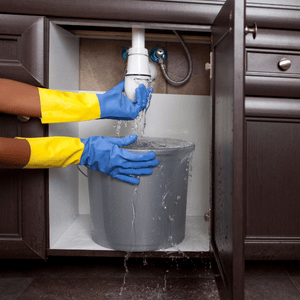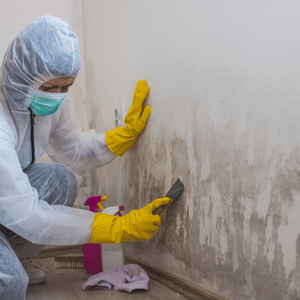Does Home Insurance Cover Restoration? What’s Really Included After Damage

When storm clouds gather, pipes burst, or fires leave their mark, your home may need a little (or a lot) of TLC. But when it comes to covering the costs of restoration work, the big question is: does your home insurance have your back? Understanding what’s covered by home insurance for restoration can feel like a maze of fine print and policy terms, but don’t worry—we’re here to clear it up.
At Austin Hi-Tech Restoration, we know that navigating insurance claims after unexpected damage can be a bit overwhelming. Let’s break down what your insurance may cover, what might fall into the “out-of-pocket” category, and the smart moves you can make to get the most out of your policy.
Understanding the Basics: When Will Home Insurance Cover Restoration Projects?
The short answer? It depends on the type of damage and the terms of your policy. Home insurance typically covers “sudden and accidental” damage, meaning issues like a burst pipe, a short-circuited appliance causing a fire, or damage from a windstorm are usually included. But there’s a catch. Home insurance often doesn’t cover damage resulting from poor maintenance or gradual wear and tear—so if your roof has been leaking for months, insurance might see that as a maintenance issue rather than a sudden event.
Here in Austin, Texas, we see all sorts of scenarios—from wild weather damage to the inevitable hiccups that come with plumbing. Knowing what’s typically covered can help you plan ahead.
Does Home Insurance Cover Restoration For Damage Scenarios?
Let’s talk about a few common types of damage that typically require restoration, and whether your insurance will likely cover them.
Water Damage

Say a pipe bursts in the middle of the night, flooding your living room. In most cases, insurance will cover this type of water damage because it’s sudden and unexpected. The same goes for toilet overflows or a broken washer hose. However, damage due to slow leaks or poorly sealed windows usually won’t be covered. Insurance companies consider these to be maintenance issues, so they might suggest you keep an eye on things like water pressure and leaky appliances to avoid problems down the line.
Here’s a helpful overview from the Insurance Information Institute on water damage and home insurance.
Fire Damage

Fire damage is typically covered by homeowner’s insurance, whether it’s from a kitchen mishap, faulty wiring, or even a lightning strike. Coverage usually includes repairing the damaged structure, replacing lost belongings, and handling the smoke and soot cleanup. At Austin Hi-Tech Restoration, we’ve helped families restore their homes from all kinds of fire incidents, and we know it can be an emotional experience. Insurance can step in as a big help here—although some policies may limit coverage if a fire resulted from negligence (like leaving a candle unattended).
Biohazard Damage
Biohazard cleanup is a more complex area, but your policy may cover certain types of biohazard restoration if the damage is accidental or sudden. This might include sewage backups or other contaminants introduced by storms or broken pipes. While this is less common, a qualified professional can help you understand whether your specific scenario fits the bill.
Read more from the blog: A Homeowner’s Guide to 12 Common Home Emergencies: What to Do When Disaster Hits
Dwelling, Personal Property, and ALE: Decoding Coverage Limits
If you’re like most homeowners, you may not be familiar with the different types of coverage within your policy. Let’s break down the three main types.
Dwelling Coverage
Dwelling coverage is the part of your policy that handles the repair or rebuilding of your home itself, including walls, floors, roofs, and other permanent features. So, if a tree comes crashing through your roof during one of those surprise Austin windstorms, your dwelling coverage would likely kick in to help cover the repair costs.
Personal Property Coverage
This covers your belongings, such as furniture, electronics, and clothing. If a fire damages your favorite chair or your collection of vinyl records, personal property coverage can help with replacement costs. Just keep in mind that certain high-value items, like jewelry, may need additional coverage.
Additional Living Expenses (ALE)
If damage forces you out of your home, ALE can cover temporary living costs, like a hotel stay or even meals, while restoration work is underway. This coverage can be a real lifesaver if your home needs extensive repairs. Austin has some great hotels, but there’s nothing like being back in your own bed!
What’s the Deal with Mold? Is Mold Remediation Covered by Insurance?

Mold is a tricky one. Whether or not mold remediation is covered depends heavily on what caused the mold. If it’s due to a sudden event, like a burst pipe, there’s a good chance your insurance will help with mold remediation and cleanup.
If mold does develop after sudden water damage, the EPA offers practical advice on mold cleanup and how to prevent further growth.
However, if mold builds up over time due to a long-standing issue (think leaks or damp basements), most insurance policies won’t cover it. Texas can be humid, so we see a lot of mold situations, and if you’re not careful, it can turn into a big (and expensive) problem.
To play it safe, tackle mold issues early and check your policy’s specifics—mold remediation coverage varies significantly from one provider to another.
Replacement, Restoration, and Rebuilding: Understanding Key Costs
When it comes to insurance coverage, the type of “value” applied to your property makes a difference.
Actual Cash Value vs. Market Value
Actual Cash Value (ACV) accounts for depreciation, meaning insurance will pay out what your property is worth today—not the amount you originally paid for it. On the other hand, Market Value reflects what someone might pay for the property on the open market. Understanding the distinction helps you set realistic expectations if you need to replace items.
Restoration Cost vs. Expanded Restoration Cost
Restoration cost covers bringing your home back to its pre-damage state. Some policies also include Expanded Restoration Cost, allowing for upgrades or improvements. Say your kitchen needs a full restoration after a fire, but you want to use higher-quality materials. Expanded coverage could help you bridge that gap.
Read more from our blog: Actual Cost Value vs. Replacement Cost Value
Flood Insurance and Other Special Policies: Are You Protected?
Standard home insurance doesn’t cover flood damage, which may come as a surprise to some. If you live in a flood-prone area (and Texas has a few), flood insurance is an important add-on. It covers water damage caused by natural flooding rather than plumbing issues. Check your area’s flood risk and consider adding this protection if it’s relevant to you.
FEMA- Nation Flood Insurance Program
Out of Pocket vs. Insurance: When You May Need to Pay Extra

Insurance policies have limits, and in certain cases, you might have to cover part of the costs. High deductibles, partial coverage, or certain policy exclusions can result in out-of-pocket expenses. Setting aside an emergency fund for unexpected repairs can give you peace of mind when insurance falls short.
Check out these resources if you need help managing disaster recovery costs
Navigating the Insurance Claims Process for Restoration Work
When it’s time to make a claim, having a clear process can be a huge relief. Start by documenting the damage with photos and notes. At Austin Hi-Tech Restoration, we’ve worked with countless insurance companies to help our clients get the restoration they need. We recommend:
- Documenting damage: Take pictures and notes right away.
- Filing promptly: Contact your insurance as soon as possible to initiate the process.
- Keeping records: Save receipts, contractor details, and communication with insurance.
- Getting professional help: We can provide estimates and documentation to help you file smoothly.
Read more: Insurance Agent vs. Adjuster – What’s the Difference?
Final Thoughts: How to Make Sure You’re Fully Covered for Restoration Needs
Before disaster strikes, it’s smart to review your insurance policy. Understanding what’s covered, where the gaps are, and what you might pay out of pocket can prevent future headaches.
For more on protecting your home, Texas GLO Recovery provides a guide on disaster preparedness and insurance.
And if you’re ever in doubt about a specific scenario, give us a call! At Austin Hi-Tech Restoration, we’re not only restoration experts but also experienced guides for our Austin neighbors navigating the insurance world.
If you need advice or restoration services, our team is ready to help 24/7. Whether it’s water, fire, or storm damage, we’re here to get your home back on track quickly and compassionately. Contact us today, and let’s take the stress out of restoration together.
Keep Reading:9 Warning Signs of Water Damage You Need to Watch For




